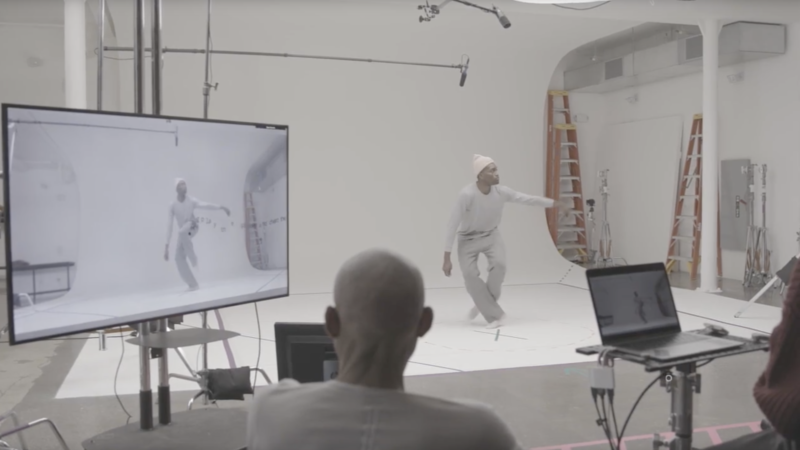Google wants to combine the worlds of art and technology to change the way people understand identity and self-expression. In one of its latest projects, the company is teaming up with Tony-award winning choreographer Bill T. Jones to create interactive art with words, symbols and movements.
For users, creating the art is as simple as logging on to a computer and turning on a webcam. The Google-Jones collaboration consists of four experiments that were developed using the PoseNet machine learning model.
“AI is supposed to take us into the next century and important things are supposed to be happening with this technology, so I wanted to see if we could use it to stir real human emotion,” Jones said in a blog post. “Maybe it’s ego, but I want to be the one to know how to use PoseNet to make somebody cry.”
The four experiments are titled Manifesto, The Game, Hold That Thought and Naming Things: Approaching 21. In Manifesto, users can create a trail of words that respond to their movements in real time. The Game was created out of a glitch in PoseNet and inspired Jones to create to multi-dancer piece. The experiment allows two users to “steal” shapes and words from each other.
Speech is integral to Hold That Thought. Users interact with their words on the screen. As words are spoken, they appear on users’ screens, attach to their body and are affected by movements. Naming Things: Approaching 21 is rooted in the history of Jones’ signature work 21, which is comprised of 21 poses, improvisation and commentary on culture. The piece is never performed the same way twice and users get the chance to mimic Jones’ movements in the experiment.

“I’ve never collaborated with a machine before. It’s a whole other learning curve,” Jones said. “We are taught in the art world that you don’t get many chances. This experience contrasted that notion.”
This is not the first time a major tech company has combined artificial intelligence, augmented reality or virtual reality with art. Earlier this year, Google also partnered with Childish Gambino for PHAROS AR, an augmented reality multiplayer app that lets users explore a neon light-filled world and Childish Gambino tunes.
British singer Nao recently worked with Microsoft to release a personalized AI music video for her hit song “Orbit.”
For now, Jones’ thinks that technology will be a pivotal part of how art evolves. He has high hopes for how he will be able to create with the next wave of technology.
“I understand context is the next frontier in machine learning. This seems paramount for art making,” Jones said. “I hope one day soon they make a machine I can dance with. I’d like to dance with a machine, just to see what that’s like.”

